#Family: Nymphalidae
Note
Hey. Hey. Monarch butterfly analysis.
The MONARCH BUTTERFLY (Danaus plexippus) is a milkweed butterfly with distinctive black and orange wings. Monarch butterflies are highly extroverted and group-orientated, likely uncomfortable when alone, but not particularly fainthearted. These butterflies migrate huge distances and can survive highly destructive weather events, making them hardy, resilient, and adaptable. The monarch uses toxins as a passive defense against predators: these butterflies are heavily conflict avoidant, fairly passive, compliant and compromising, tolerant, and docile. Tactile setae on the monarch's body are used in orientation during flight and to differentiate between plants: monarch butterflies are hands-on, tactile and practical at heart. These butterflies are fickle, curious and highly impulsive, but not particularly devoted, with a tendency to wander from their breeding or food habitat. Sensitive and aware, monarch butterflies are strongly perceptive, attuned to both regular seasonal changes and subtle mating cues. These animals strive to maintain control of themselves and are straight-forward and honest, somewhat disloyal, cautious, wary, and not likely to be manipulative.
The WHITE MONARCH (Danaus plexippus plexippus) is a rare, greyish white colour morph of the monarch butterfly: these butterflies are mildly more avoidant, flighty and disloyal.



#monarch butterfly#danaus plexippus#genus: danaus#family: nymphalidae#order: lepidoptera#class: insecta#daemon analysis#daemonism
8 notes
·
View notes
Text

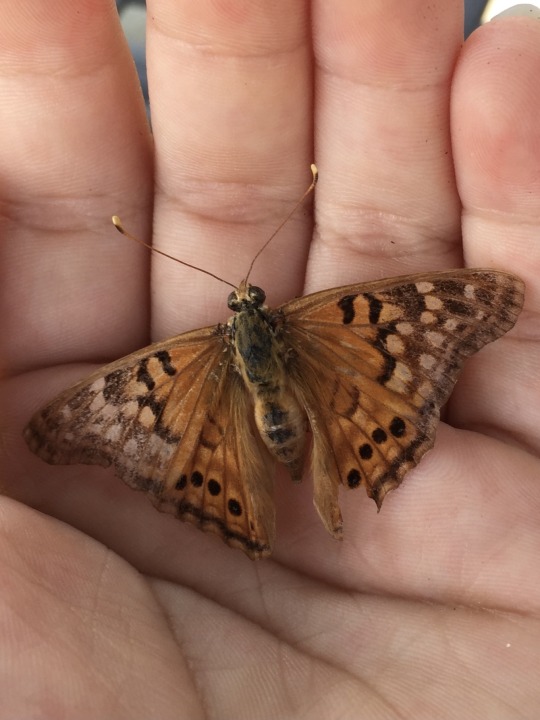
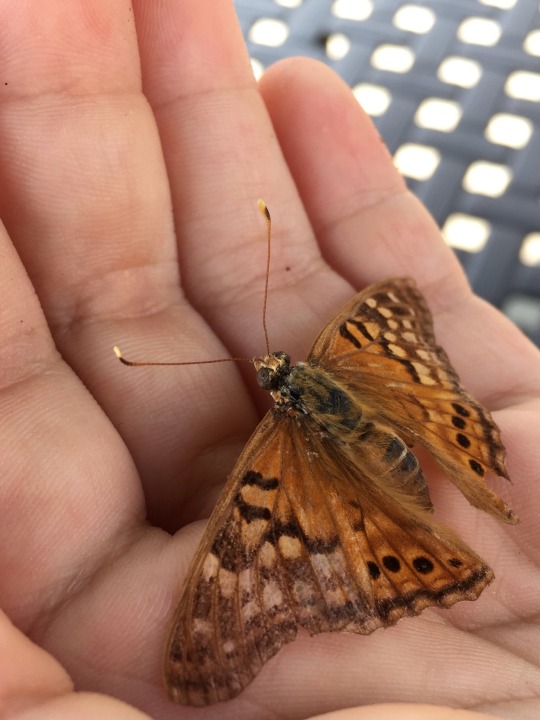
A Tawny Emperor!
#Phylum: Arthropoda#Class: Insecta#Order: Lepidoptera#Family: Nymphalidae#Genus: Asterocampa#Asterocampa clyton#tawny emperors#brush-footed butterflies#butterflies#bugs#insects
4 notes
·
View notes
Text


Swiss Brassy Ringlet (Erebia tyndarus), family Nymphalidae, found in the Alps of Europe
photos by böhringer friedrich & Clarisse Dayer Micheloud
7K notes
·
View notes
Text


Greta morgane oto (Nymphalidae: Ithomiini) is a butterfly that is known for it's crystal clear wings.
If you see closely you'll notice that they only have 4 legs, this is a characteristic of the family Nymphalidae.
#illustration#digital art#digital artist#digital illustration#artist on tumblr#art#artists on tumblr#digitalillustration#pixel art#bugblr#bugs#entomology#butterfly#butterflies
206 notes
·
View notes
Text

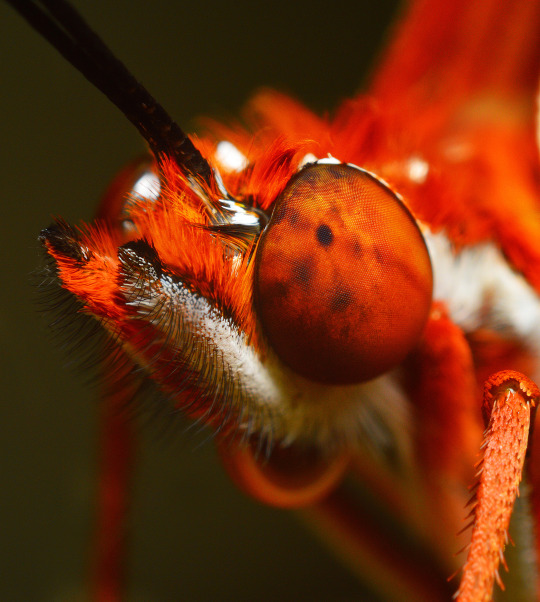
A freshly emerged Gulf Fritillary.
The Gulf fritillary or passion butterfly (Dione vanillae) is a bright orange butterfly in the subfamily Heliconiinae of the family Nymphalidae. I raised this particular specimen, and photographed it in Northern Florida on its host plant.
#photography#nature#nikon#original#photographers on tumblr#macro#butterfly#focus stacking#insects#bugs#micro#sigma#canon#sony
245 notes
·
View notes
Text

Front cover - page 3 - next
Metamorphosis
Aziraphale finally meets Crowley!!
Crowley is a Red Admiral (Vanessa atalanta).
Fun fact: when I made some research about Red Admirals, I learnt that they eat fruits as well as nectar. Many butterflies can eat fruit if there's really nothing else but Red Admirals love it, so of course there was going to be an apple.
I also learnt like 2 days ago that butterflies of the Nymphalidae family (including Red Admirals) only have 4 legs, which is cursed information considering many describe "having six legs" as the characteristic for being an insect. So according to this those butterflies aren't insects? Anyway. I had already made the 4 first pages when I learnt that so here Crowley has six legs and in the next too but in 2 weeks he'll only have 4 legs. Pretend you don't notice.
#good omens#good omens fanart#metamorphosis comic#ineffable husbands#fanart#aziraphale and crowley#comics#good omens comic#fanart on tumblr
24 notes
·
View notes
Text

褄黒豹紋[Tsumagurohyōmon]
Argyreus hyperbius
褄[Tsuma] : Skirt or hem of a kimono
黒[-guro|Kuro] : Black
豹[Hyō] : Leopard, panther
紋[Mon] : Pattern; crest
It is a member of the family Nymphalidae, the male has a leopard pattern with black spots on an orange background over the entire wing, and the female has blackish (and red and white) outer half of forewings in addition to the pattern. The name comes from that of the female.
The larvae like to feed on the leaves of 菫[Sumire](The genus Viola). Recently, the adults have been flying into my garden and laying their eggs in each of several kinds of violets that are growing here and there in spots. They are like this, so violas and pansies in flower beds often suffer feeding damage.
In the photo, it is the flower of 狐の孫[Kitsunenomago](Justicia procumbens) that the female is nectaring on.
19 notes
·
View notes
Text
Nexus Trivia

A/N: to commemorate the final chapter of nexus' main storyline, i wanted to string together some trivia relating to the story/its creation process!
Nexus index.

When planning out this story, I wanted to draw from Greek mythology because I felt some of the motifs/themes would mesh well. Some of the references are more evident than others. These references include:
The planet Eris' name, owing to the goddess of discord/strife.
Ania, Reader's mother, is the personification of ache and anguish.
Chrysus, the spirit of gold.
Caicias, god of the northeast wind.
The quadrant Reader lives in, Thelx, is a shortened version of Thelxinoë. This name is attributed both to a siren and one of the four Titan muses. Charming minds was her area of expertise.
The name of Reader's business, the LOTUS-EATER, is a reference to (surprise) the lotus-eaters mentioned in Homer's Odyssey. An island where people pass their days leisurely in fantasy felt fitting for the Synalink business.
As for Reader/N darling, her motifs draw from the goddess of the soul, Psyche. There's also hints of Persephone in there because well. Blade and his connection to death/his obsession that disturbed Reader's mother parallels Hades and Demeter.
The inspiration for Reader's last name, Phaeales, is a shortened version of Nymphaeales, an order of flowering plants. Lotus' fall under this category. Coincidentally, the name for the largest butterfly family is Nymphalidae. Reader and Psyche are both associated with butterflies/butterfly wings. These shared prefixes went on to form the basis for the humanoid long-life species found on Eris, Nymphalians.
Since there was so much butterfly stuff fluttering about, I was like hey, why not commit to the bit. So some of the areas in Eris are named after flower parts. There's Perianth, the outer part of a flower, and the nectary, which is where, unsurprisingly, nectar is formed.
Nectar guides, the railroad system on Eris, references the special markings on flowers by the same name. Nectar guides are those lil lines that guide pollinators to their pollen and nectar.
Okay enough etymology for now. The one thing I kept from my first outline is Nexus' ending, I changed just about everything else. The ending felt like such a gut punch that I couldn't just change it into a one-shot, it wouldn't hit the same.
There was going to be more philosophy but I spared everyone that. Originally, I associated Blade with determinism, Reader with rational-egoism, Nona with nihility, and Lear with humanism. There's still some traces of this but I toned it down a bit 😭
I didn't spare everyone from Freud though, which might be worse tbh. Reader's character was roughly built around his concept of the ego, Nona, the id, and Lear, the superego.
50 notes
·
View notes
Text

Common mapwing
Cyrestis thyodamas, the common map, is a species of butterfly in the family Nymphalidae. It was first described by Jean Baptiste Boisduval in 1836. It is found in the Indian subcontinent and Southeast Asia. [ Wikipedia ]
📷 Ramesh Kumar
57 notes
·
View notes
Text

Viceroy
Limenitis archippus
Nymphalidae Family
Photograph taken on September 15, 2024, at Kerncliff Park, Burlington, Ontario, Canada.
#wildflowers of southern ontario#Viceroy#butterfly#Limenitis archippus#Limenitis#Nymphalidae#Kerncliff Park#Burlington#Ontario#Canada
7 notes
·
View notes
Text

Melanargia galathea, the marbled white, is a medium-sized butterfly in the family Nymphalidae. Despite its common name and appearance, this butterfly is one of the "browns", of the subfamily Satyrinae.
#Schachbrettfalter#Melanargia galathea#Schmetterling#Marble white#Butterfly#Nature#Wild Life Germany
10 notes
·
View notes
Text


Черно-рыжая многоцветница — дневная бабочка из семейства Нимфалиды.
The black-and-red multicolor is a diurnal butterfly from the Nymphalidae family.
#русский tumblr#россия#июнь 2023#лето#солнечныйдень#природа#загородом#бабочка#макрофото#мои фото#мое видео#russia#summer#june#outdoors#sunny day#nature#nature photography#butterflies#my photos#beauty of nature#original photography#photographers on tumblr#macrophotography#my video
57 notes
·
View notes
Text
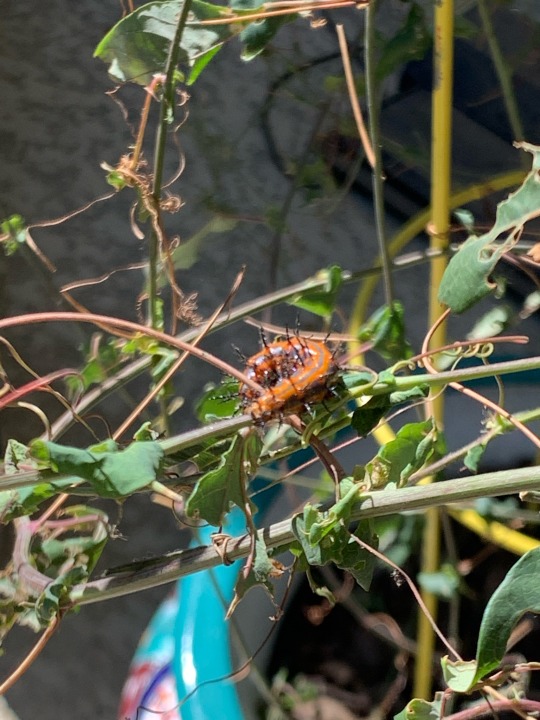


An Asian Lady Beetle and Gulf Fritillary larvae!
#Phylum: Arthropoda#Class: Insecta#Order: Coleoptera#Order: Lepidoptera#Family: Coccinellidae#Family: Nymphalidae#Genus: Coccinella#Genus: Dione#Coccinella septempunctata#Dione vanillae#Seven-Spotted Lady Beetles#Gulf Fritillaries#Brush-footed butterflies#Lady Beetles#butterflies#beetles#insects#arthropods
3 notes
·
View notes
Text

Pink-tipped Satyr (Cithaerias aurora), family Nymphalidae, Apuya Trail, Ecuador
photograph by Chan Wah Choy
#clearwing#satyr#butterfly#cithaerias#nymphalidae#lepidoptera#insect#entomology#animals#nature#south america
2K notes
·
View notes
Text


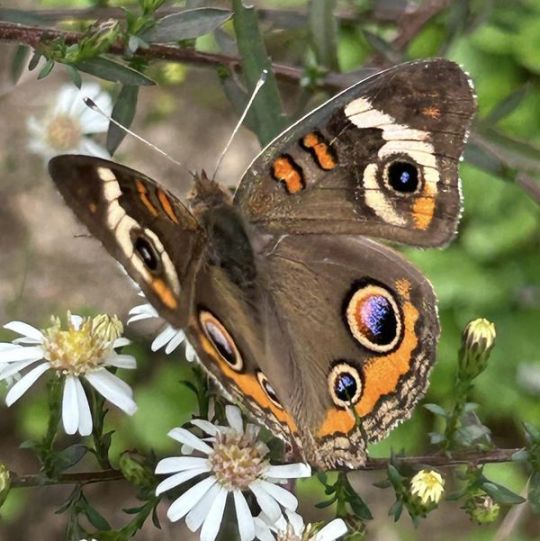
Common Buckeyes (Junonia coenia), family Nymphalidae, New Caney, Montgomery county, TX, USA, 11/6/23
photographs by Paxon Kale CC
41 notes
·
View notes
Text



Morpho Helenor
My mom took a picture of a common blue morpho butterfly. Morpho helenor is a species of ditrisian lepidopteran of the genus Morpho, family Nymphalidae. It inhabits jungle regions of Central and South America. This species was originally described in 1776 by the Dutch entomologist Pieter Cramer.
The subspecies are very variable in color pattern. Dorsally it is generally black, near the outer edges of the wings show a series of ocelli, white on the forewings, and red on the hindwings. On the anterior edge of the forewings there is a prominent white spot, and in the entire inner area of the wings there is a large blue-blue spot in sharp contrast.
Ventrally it presents a general brownish coloration. It shows white and cinnamon bands on the outer margin of the wings shows a series of dark ocelli, surrounded by a cinnamon halo. From the anterior edge of the forewings there is a prominent white spot that is diluted until it reaches the vicinity of the tail. It shows an irregular chain of large ocelli of different sizes, composed of concentric white, cinnamon, black aureoles, and already in the center with a small white or lilac spot. The outer edge of the hind wings has a prominent series of red spots.
7 notes
·
View notes